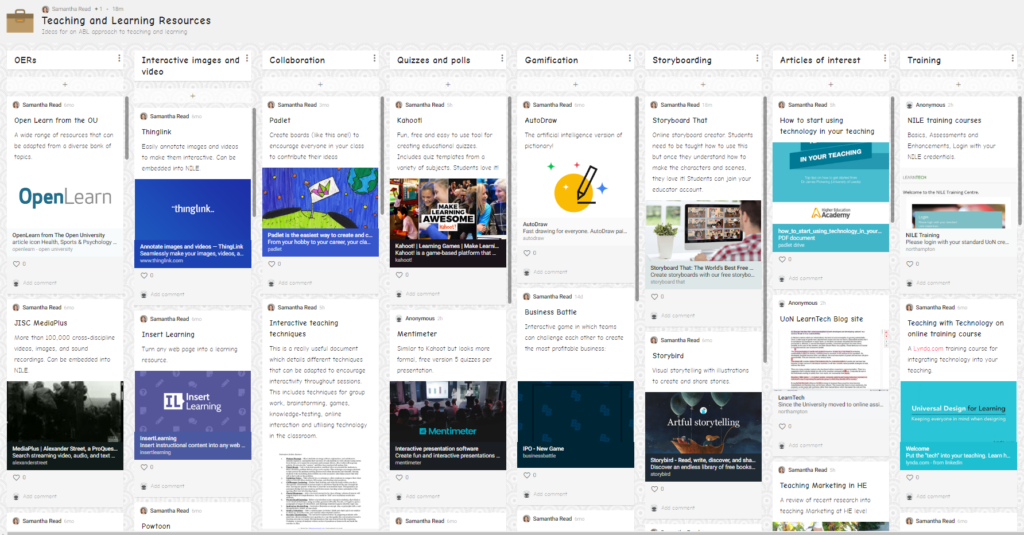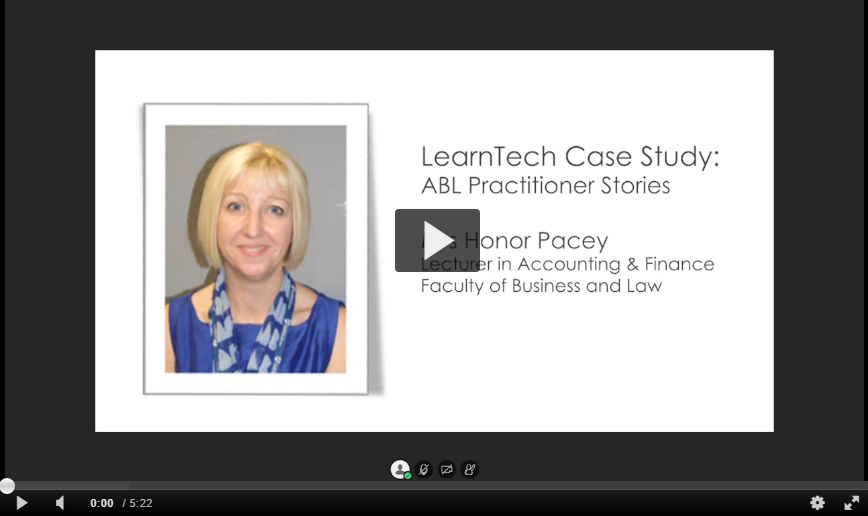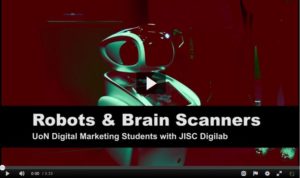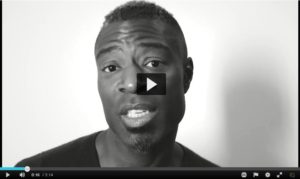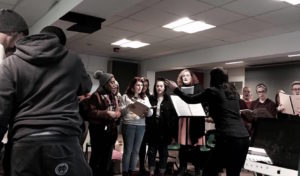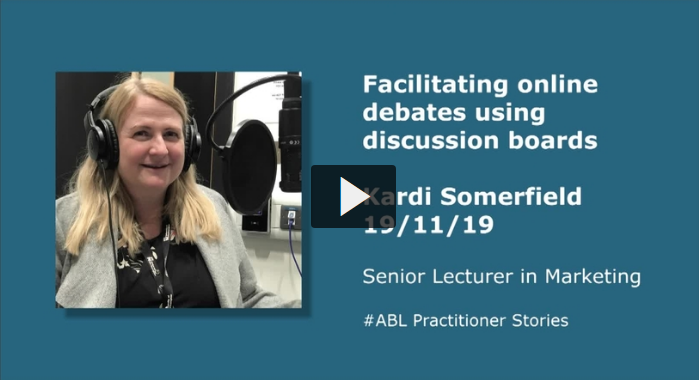
Senior Lecturer in Marketing Kardi Somerfield provides a reflective insight into how students can be involved in both module content creation and assessment design, by facilitating online debates which inform the end of year exam.
Working with third year Marketing students in the module ‘Issues of Advertising Practice’, Kardi encourages her students to view the debates as an opportunity for democratic learning by giving them the role of a weekly chair. To fulfil this role students must begin a topic with their own question, host a debate and nominate a best post of the week.
Her approach has been highly commended by the module’s External Examiners as being innovative and well run. The Dean of Learning and Teaching, Prof Ale Armellini said: “Kardi’s approach is highly engaging for students, as well as rigorous and innovative. This is an exemplar of active blended learning in practice, where student centredness, personalisation and interaction operate together towards the achievement of outcomes and a fantastic learning experience”.
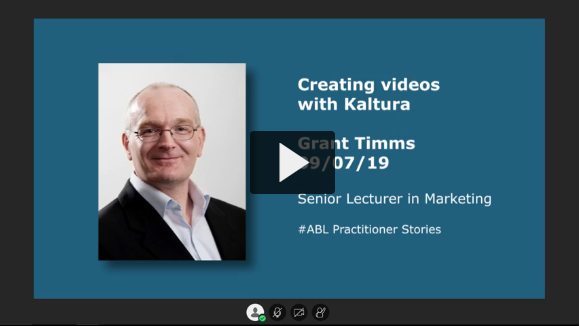
In this ABL Practitioner Story, Grant Timms (Senior Lecturer in Marketing) reflects on his use of the Kaltura video recorder and streaming platform to create videos and video quizzes to support student engagement.
Grant shares his feelings on the importance of considering the needs of the audience, how analytics help him track audience engagement, and how to stand out in a digital world where students attention is often hard to catch.
The Kaltura Capture recorder and the MediaSpace video streaming platform are available to all staff and students at the University of Northampton. A link and an introduction can be found on the NILE Help tab, under Tools & Resources.
If you’re inspired by his experiments with video quizzes then contact your Learning Technologist for training and support, or explore on your own by reading this FAQ.
http://askus.northampton.ac.uk/Learntech/faq/188945
Case study produced by Learning Technologists Al Holloway and Richard Byles.
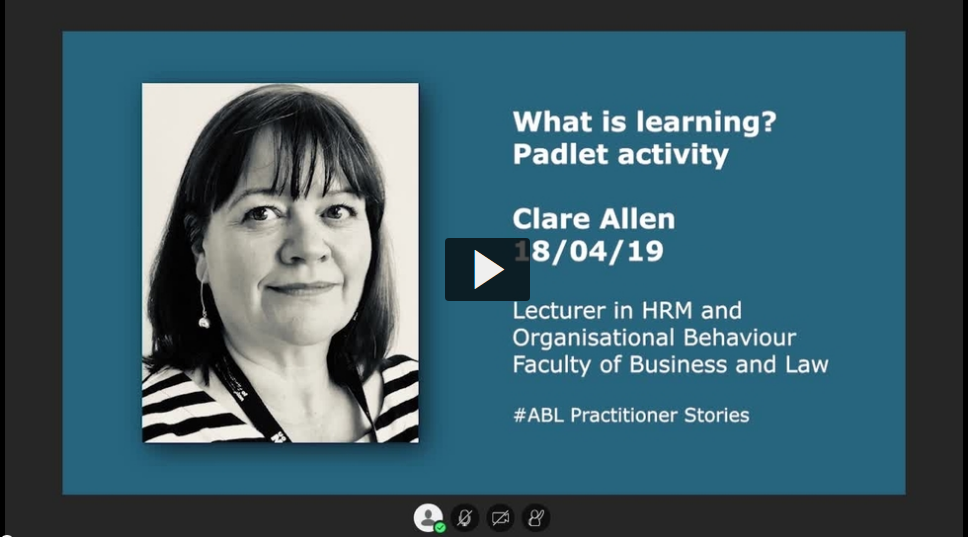
In this new ABL Practitioner Story, Clare Allen (Lecturer in Organisational Behaviour) shares her experience and thoughts on using Padlet in her teaching to support open group discussion.
At the beginning of the year, she asked the students to discuss in small groups what they thought learning was and to use Padlet to upload an image that best represented the thoughts of their group.
Clare talks about how she introduced this new tool to her students, why she found Padlet more engaging than simply delivering PowerPoints slides and what impact she feels it made on students understanding of their subject.
Listen to Clare in conversation with Richard Byles and Al Holloway, Learning Technologists for the Faculty of Business and Law, and if you’re interested in exploring how Padlet could support your teaching then copy the following link into your browser:
http://askus.northampton.ac.uk/Learntech/faq/186022
Padlet is available free to all staff and students at the University of Northampton and can be found on the NILE Help tab, under Tools & Resources.
FBL Marketing Lecturer Samantha Read shares her top ‘Teaching and learning resources – Ideas for an ABL approach to teaching and learning’.
This list features links to; OERs(Open education resources), tools for creating interactive images and video, collaboration tools, quizzes and polls, gamification ideas, storyboarding templates, articles of interest and links to further training.
Samantha recently spoke about her experiences of ABL at the FBL Faculty ABL away day, and recommends that staff consider the following points when implementing a new tool:
- Don’t try to introduce too many new tools into your online and face-to-face sessions. Practice using a few and start to integrate the ones that you feel confident using and can support students in adopting.
- If you want students to use an online tool for the face-to-face or online element of your session, provide them with really clear instructions (including a short video where possible) and begin using that tool during the face-to-face session so that everyone will feel comfortable using it.
- Where possible, embed your resources into NILE so that they are easily accessible. You can usually find an ‘embed code’ to copy and paste into the html section of a NILE content area rather than directing students towards a link.
- Don’t feel disheartened if one idea works for one group but does not work for another. For me, it’s all about trial and error and adapting the resources and tools to each individual group of students based on their skills, learning preferences and the feedback they provide.
Samantha’s ABL resources can be viewed on the Padlet below. Please feel free to add any other resources that you would recommend to others.
In this 5 minute video, Lecturer in Accounting and Finance Honor Pacey reflects on her five-year journey at the University, and how she is developing new ways of engaging students with Active Blended Learning at the Waterside campus.
Honor demonstrates a number of new developments designed for this year including; how she supports collaborative ABL activities in class, how NILE quizzes are used to support and focus her students’ attention on the module assessments, and how moving forward she will be working with the students to develop their digital footprints.
In this video Mark Allenby, Senior Lecturer in Social Work, discusses how peer assessments have provided an opportunity for active learning with his first year BA in Social Work students and reflects on why he will be increasingly using peer assessments in his teaching at Waterside.
Mark introduced peer assessments as formative activities within his 17/18 module SWK1049 – Skills for Practice – using the NILE tool Self and Peer Assessments, in order to help scaffold his students’ learning for their forthcoming assessments.
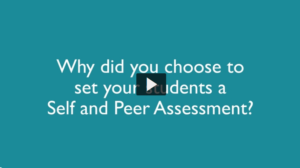
VIDEO – Mark Allenby reflects on NILE Self and Peer Assessments
Working with Learning Technologist Richard Byles, he has been documenting his students’ feedback using the digital post-it tool, Padlet, and by recording video feedback with student Angell O’Callaghan.
The majority of feedback for the activity was very positive, with many wishing to practice further. Students also identified areas where the activity could be improved. Comments included:
“I would like to use this more often throughout my degree.”
“It was very useful and I liked the autonomy. It was helpful to read others’ work.”
“It was good to take other’s interview skills on board and use them myself, helping me better and develop my own interview skills.”
“Scoring as a Yes/No or a 1/2 doesn’t give a lot of scope.”
“The process (of submitting) was somewhat convoluted but this may be due to it being a new activity.”
Mark says that “peer-feedback is a tool that fits perfectly with the move to ABL, as students are collaboratively engaged in evaluating their own progress towards goals that they have chosen for themselves”. In conclusion, he advocates that staff try the tool for themselves in ‘low risk’ formative activities with students and explain to them the benefits of peer assessments.
For more information on using Self and Peer Assessments please read the FAQ – How do I set up a Self and Peer Assessment in NILE? or contact the Learn Technology team: learntech@northampton.ac.uk
Advertising and Digital Marketing students got a glimpse of their professional futures this week when they got to work with a robot, a brain scanner, and a 3D virtual reality paint brush.
Click here to view video – Robots & Brain Scanners, UoN Digital Marketing Students with JISC Digilab
The group of second years got to try out all this hi-tech kit as part of a competition prize won by one of their lecturers.
Back in November, Senior Lecturer in Marketing Kardi Somerfield was named in the top 10 higher education social media superstars by JISC, an organisation that provides digital services to UK education.
As a reward, Kardi won the visit from their Digi Lab team.
“I was delighted to make the top ten, particularly because my students could benefit from this prize. It’s been great to have JISC and Digi Lab here, along with all this cool tech to experience.”
Over the course of a morning, the students had a chance to programme the robot for themselves – and for marketing students that meant imagining it working in places like a restaurant, hotel, or shopping mall.
Kardi said: “It was helpful to see some of the technology first hand, and with the robot it was far easier to imagine it in a service or marketing environment when you could see first-hand how people interacted with it.”
The 30 strong group also got to try out the Emotiv brain scanner – a wireless EEG headset that records brainwaves and overlays the pattern of electrical activity onto an image of a brain.

Image: Emotive brain activity data
“It detects responses such as interest, focus, and stress, so it’s perfect for testing how effective an advertising campaign might perform, or what consumers really feel about a product,” said Kardi.
Verity Nalley, from JISC Digi Lab team said: “The marketing students came up with a load of amazing ideas for how it could be used in promotional campaigns.”
Digital Marketing Student Karima Iredale had the idea of creating an app that would connect with wearable tech like the Apple Watch or the Fitbit that would give the user information on how focused or stressed they were.
“So it wasn’t just about the body activity but the brain fitness as well,” she said.
Her classmate Raluca Sandu agreed it was a great experience.
“It is much easier for us to now consider it as an option when we are in the position to develop a campaign or talk about viral marketing for a real job.”
The final bit of kit in the prize was a Google Tilt brush – which is conjunction with a VR headset, allows users to ‘paint’ both large and in 3D.
Summing up the benefit of the day, Kardi said the most important thing was to create an environment where students can share.
“We can train them in one particular technique today, but in a year’s time, or two years’ time, it will be something else – so it’s more important to build the capacity to embrace the new technology and keep learning, and acquiring, and deciding which things work for you. I think that’s where things like today can help as it might just be that sometimes you need to have things put in front of you to give you that opportunity to explore.”
Article: Published in Unify 18 Jan 2018 | Video: Learning Technology 2017
As an advocate for using technology enhanced learning Senior Lecturer in Cross Cultural Management Diepiriye Kuku-Siemons discusses his motivations, process, and reflections for integrating mobile technologies into the classroom.
In this first video, he provides some guidance on how he facilitates the use of mobile technologies when students are working in groups and describes his role as a facilitator in learning sessions. The purpose of this video was to share his own thoughts about the use of mobile technologies in teaching and learning with the wider academic community via the UN Staff Facebook group.
His second video describes how using mobile devices allows students to interact with research in a more immediate and accessible way and advises that activities should be structured in a way that ensures students are mindful of the purpose of the learning activities and are not distracted by existing social media channels.
To give a full picture of the activity, students from the group volunteered to provide feedback of their experiences using mobile devices in the classroom.
The film was produced with Learning Technologist, Richard Byles, during two sessions; in the first session students used mobile technology for research and brought them back to the group for discussion. In the second Diepiriye facilitated a classroom activity in which students discussed how mobile technology provides both opportunities and challenges for business.
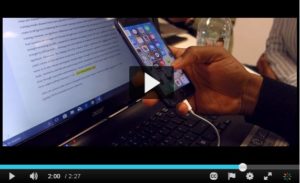
Click to view video – Using mobile technology in class with Diepiriye Kuku-Siemons
If you would like to see Richard Byles and Deipiriye Kuku-Siemons speaking about their ongoing work please register for the forthcoming LLS Conference on the 4th of May where they will be giving a presentation on ‘Facilitating mobile technologies in the classroom’.
By Dr. Jasmine Shadrack, Senior Lecturer in Popular Music, FAST
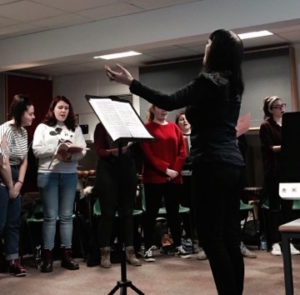 As this year’s choir have been asked to perform at the opening ceremony of Waterside, as well as our own performance at the Royal next June, it was important to choose a piece of music that had the wow factor. And for me, that has to be Mozart’s Requiem Mass in D Minor. It was the first piece I ever conducted so I have very fond memories of it. I have also performed it myself as a soprano during my undergraduate degree so my knowledge of it is intimate. The fact that Mozart knew he was dying when he wrote it, makes the piece all the more poignant and special.
As this year’s choir have been asked to perform at the opening ceremony of Waterside, as well as our own performance at the Royal next June, it was important to choose a piece of music that had the wow factor. And for me, that has to be Mozart’s Requiem Mass in D Minor. It was the first piece I ever conducted so I have very fond memories of it. I have also performed it myself as a soprano during my undergraduate degree so my knowledge of it is intimate. The fact that Mozart knew he was dying when he wrote it, makes the piece all the more poignant and special.
The music for it will take a longer time to come together but the choir are making great strides already. We have completed (in the most part!) the Aeternam and the Kyrie Eleison (the first two movements) as well as learning some traditional Christmas carols too (for a lunch time concert later in the term). This time I am joined by a new member of staff, Miss Francesca Stevens who does a two hour vocal training session a week to support what I do every Monday in choir rehearsal. Already I have noticed the bond starting to form, not just between each section of the choir, but as a unit too. One of the things I love most about doing this is watching everyone work together for a common goal. It is active blended learning at every stage, from the rehearsals all the way through to the performance. Not only do they learn close score reading, sight reading , close part harmony, how counterpoint functions, effective breathing techniques, good pronunciation, professional conduct and critical listening, they also forge real solidarity as a cohort that spans across all years of the popular music undergraduate degree.
They are able to exercise their own autonomy by using their voice. This might sound simplistic but it really helps to acknowledge that one voice can have a huge impact on a choir. Through their subjective involvement, they take part and contribute to an objective goal so it is experiential. They also gain empowerment through their learning community. As the choir is voluntary, it means that they are there because they want to be and they are not doing it for assessment purposes. I have tried making it assessable previously and it just didn’t work; it actually undermined all the camaraderie and fun we have with it. There is a real sense of inclusivity too that reflects on their personal responsibility to the choir.
So, at week three of the choir in term 1, we are making great progress and having fun at the same time!
Jasmine will be keeping us up to date with the progress of the choir, but this post is also one in a series of ABL Practitioner Stories, published in the countdown to Waterside. If you’d like us to feature your work, get in touch: LD@northampton.ac.uk
By Nick Cartwright, Senior Lecturer in Law, FBL
I was at a meeting of people involved in various ways in staff development of lecturers and as we as an institution had adopted Active Blended Learning (ABL) as the ‘new normal’ I found myself asking in our break-out group: “ABL WTF?” The response was roughly along the lines of “it’s what you do Nick” and several conversations later I was invited to write this blog post about what I do in the classroom and why.
Firstly, one of the most important answers to the why I teach the way I do is because I enjoy doing it this way and it works well for me and what I teach. I certainly don’t think it’s better than other approaches and I don’t know if it would work for every tutor or every subject.
So, I know what works for me now but it was a long journey. I started teaching the way I was taught within the straight-jacket of institutional policy where I then worked, we had a lecture then a seminar every week for ever every module. The lecture was recorded on VHS tapes and stored in the library, the technology meant I had to use PowerPoint and stand stock still behind the lectern. The hour-long seminars I inherited required that in week 1 we asked the students to read chapter 1 of the assigned text, week 2 was chapter 2 and so on. Students were instructed to answer roughly 10 questions and bring hard copies of their answers. I ran a tight ship, students who turned up unprepared were told to leave – my classroom was an exclusive space for the students that were the easiest to teach. We had roughly 5 minutes on each question then left, job done.
Later in my career, at a different institution, I sat in a staff meeting listening to colleagues report that the foundation students had “gone feral” – a chair had been thrown, a lecturer threatened and they simply would not sit down in two straight rows, shut up and listen as wisdom was dispensed. Of course they wouldn’t, despite being bright and capable and having gone through 13 years of formal education they were in the foundation year because they hadn’t achieved the two D’s necessary to enter straight onto the degree programme. Bored with PowerPoint I found myself eagerly volunteering with a colleague to take on these students who we were to later find out were some of the brightest, most enthusiastic students we’d ever had the pleasure of teaching.
 One student in feedback tagged our efforts ‘sneaky teaching’ because without realising it they were learning, we tagged it ‘learning by doing’ and at validation the external panel members commended it. In one module the students formed political parties and competed to be elected, in another they witnessed a train wreck and were the lawyers trying to support the victims, at the end arguing before the European Court of Human Rights that one client had the right to die. We didn’t tell them anything, clients sent letters, senior partners sent emails and we patiently waited for them to ask us to direct them to a source or take through a topic area. That we learn best by doing is nothing new, the Ancient Greek philosophers key principle was that dialogue generates ideas from the learner: “Education is not a cramming in, but a drawing out”1. I came to Northampton burning with a passion to get my students learning by doing because it works and because it engages many students who have been excluded by traditional schooling.
One student in feedback tagged our efforts ‘sneaky teaching’ because without realising it they were learning, we tagged it ‘learning by doing’ and at validation the external panel members commended it. In one module the students formed political parties and competed to be elected, in another they witnessed a train wreck and were the lawyers trying to support the victims, at the end arguing before the European Court of Human Rights that one client had the right to die. We didn’t tell them anything, clients sent letters, senior partners sent emails and we patiently waited for them to ask us to direct them to a source or take through a topic area. That we learn best by doing is nothing new, the Ancient Greek philosophers key principle was that dialogue generates ideas from the learner: “Education is not a cramming in, but a drawing out”1. I came to Northampton burning with a passion to get my students learning by doing because it works and because it engages many students who have been excluded by traditional schooling.
I had started out teaching some more practical topic areas so the ‘doing’ was quite easy to work out but last week I found myself in a first-year workshop dealing with the issues of the nature of law and specifically feminist and queer theory approaches. It was when discussing how that had gone that I was asked to write down how I had done it.
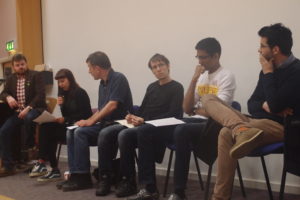 The session needed to get the students to grasp that there are different critical voices within (and outside of) feminism and to get to grips with the skill of applying different perspectives to the law – what they applied the law to was less important. The workshop was two hours long and there were three questions to discuss, we ran out of time in every session and every session was completely different. I could have worried about equality of learner experience, ensuring every student in every session got an identical set of correct notes, and in my younger days I would have done, but my students did get equality of learner experience. They got to choose the lenses through which we discussed the issues, for example one group focused on issues of consent and sexual touching in a social setting, another on the lack of diversity in the judiciary and another on whether the dominant narratives around immigration were racist. It was relevant to all of them rather than just those who related to the lens I would have chosen which would likely be white, male and straight.
The session needed to get the students to grasp that there are different critical voices within (and outside of) feminism and to get to grips with the skill of applying different perspectives to the law – what they applied the law to was less important. The workshop was two hours long and there were three questions to discuss, we ran out of time in every session and every session was completely different. I could have worried about equality of learner experience, ensuring every student in every session got an identical set of correct notes, and in my younger days I would have done, but my students did get equality of learner experience. They got to choose the lenses through which we discussed the issues, for example one group focused on issues of consent and sexual touching in a social setting, another on the lack of diversity in the judiciary and another on whether the dominant narratives around immigration were racist. It was relevant to all of them rather than just those who related to the lens I would have chosen which would likely be white, male and straight.
The biggest challenge is letting go and empowering students to find their own way through the issues, generating authentic knowledge which may be different from or even challenge my knowledge. Practically it also involves what I dubbed in chats ‘double thinking’, keeping two chains of thought going at once. One half of my brain is following the students journey, sometimes disappearing down the rabbit hole, whilst the other is focused on what we need to cover and trying to keep an overview of the topic all the time working out what questions I need to throw out to keep the two tracks running in the same direction – if I lose the latter the session suddenly loses any sense of direction and this disengages my students. It’s more challenging and more tiring than how I used to teach, but I believe it is a better, more inclusive experience for my students. I wonder what I’ll be doing 10 years from now and how critical I’ll be of what I do today?
1Clark, D., ‘Socrates: Method Man’ Plan B [online] http://donaldclarkplanb.blogspot.co.uk/search?q=Socrates [accessed 4 October 2013 @ 14:37]
This post is one in a series of ABL Practitioner Stories, published in the countdown to Waterside. If you’d like us to feature your work, get in touch: LD@northampton.ac.uk
Recent Posts
- Spotlight on Excellence: Bringing AI Conversations into Management Learning
- Blackboard Upgrade – December 2025
- Preparing for your Physiotherapy Apprenticeship Programme (PREP-PAP) by Fiona Barrett and Anna Smith
- Blackboard Upgrade – November 2025
- Fix Your Content Day 2025
- Blackboard Upgrade – October 2025
- Blackboard Upgrade – September 2025
- The potential student benefits of staying engaged with learning and teaching material
- LearnTech Symposium 2025
- Blackboard Upgrade – August 2025
Tags
ABL Practitioner Stories Academic Skills Accessibility Active Blended Learning (ABL) ADE AI Artificial Intelligence Assessment Design Assessment Tools Blackboard Blackboard Learn Blackboard Upgrade Blended Learning Blogs CAIeRO Collaborate Collaboration Distance Learning Feedback FHES Flipped Learning iNorthampton iPad Kaltura Learner Experience MALT Mobile Newsletter NILE NILE Ultra Outside the box Panopto Presentations Quality Reflection SHED Submitting and Grading Electronically (SaGE) Turnitin Ultra Ultra Upgrade Update Updates Video Waterside XerteArchives
Site Admin

